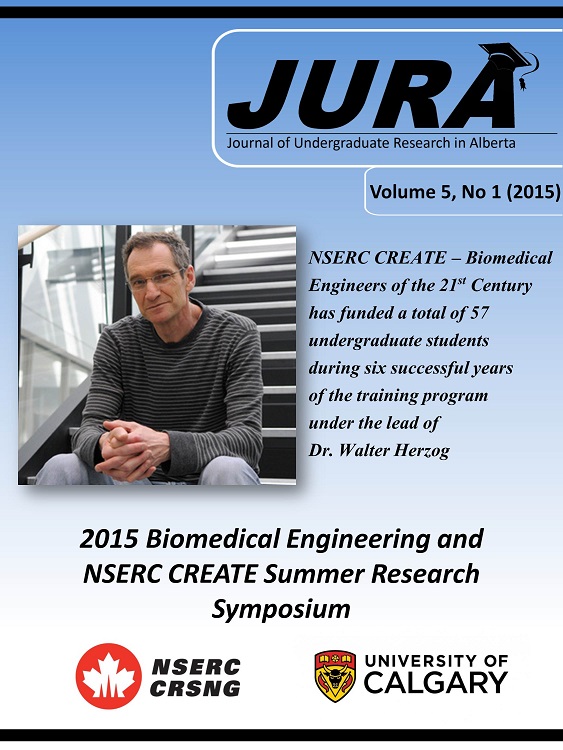DEVELOPMENT OF A LOADING DEVICE FOR IMAGING RABBIT MCL ENTHESES WITH SECOND HARMONIC GENERATION MICROSCOPY
Keywords:
Loading device, MCL enthesis, mechanicsAbstract
INTRODUCTION
Entheses are transitional structures in the body between a flexible material and a much stiffer material: ligament and bone, respectively. A gradual transition of mineral content and collagen fibre organization enables the enthesis to dissipate stress concentrations and transfer load between the adjoining elements, contributing to normal joint function [1]. Damage to this small region is associated with conditions like tennis elbow and jumper’s knee. Enthesis tears do not repair well, causing long term weakness. To date, the challenge of observing entheses under applied load has inhibited understanding of their mechanical behaviour.
Second Harmonic Generation (SHG) microscopy is a technology that can be used to image highly polarizable proteins like collagen without the need for section fixation or molecular excitation [2]. Given that collagen fibre structure affects load transfer at entheses, SHG microscopy is an ideal tool to elucidate the fibre structure at MCL entheses.
The purpose of the project described was to develop a custom device to allow observation of the collagen fibre network of the rabbit medial collateral ligament (MCL) enthesis in the SHG microscope as tensile load is applied.
METHODS
After generating a morphological chart of alternative solutions, the optimal option was chosen based on project requirements. The design was created with CAD software (SolidWorks 2015) and where possible, the proposed design was modified to optimize objectives— minimizing cost and maximizing movement accuracy. With CAD, it is easy to modify components of a model while assessing its impact on the model as a whole.
RESULTS
In the final design, the rabbit bones can be secured to bone pots at a physiological angle of 70°, with the MCL in the line of action of the applied force. One bone pot remains stationary as the other, sliding on rail guides which constrain pot movement, is pulled by a linear actuator. A custom load cell will collect force data as the load is applied. For its light-weight property and potential to be scanned using MRI, Perspex is the material of choice for the device.
The completed design, shown in Figure 1, satisfies all the requirements previously established and requires only one hand for operation. This model allows for a testing procedure simulating physiological conditions while maximizing accuracy of the recorded data through incorporating rail guides and making use of a linear actuator.
DISCUSSION AND CONCLUSIONS
With some minor modifications to the bone pots, this device can be used as a reference product for the study of other tissues under load. However, it would be worthwhile to consider interchanging the bone pots between uses since the bone cement is difficult to remove.
The small size of entheses has stymied researchers’ efforts to characterize their inhomogeneous material behavior. However, this device will enable the observation of collagen fibre behaviour under load, which will provide insight into mechanisms of load transfer in the enthesis and in time, contribute to improved surgical attachment procedures.Downloads
References
Freund & Deutsch. Opt. Lett, 11: 94, 1986.
Downloads
Published
Issue
Section
License
Authors retain all rights to their research work. Articles may be submitted to and accepted in other journals subsequent to publishing in JURA. Our only condition is that articles cannot be used in another undergraduate journal. Authors must be aware, however, that professional journals may refuse articles submitted or accepted elsewhere—JURA included.


